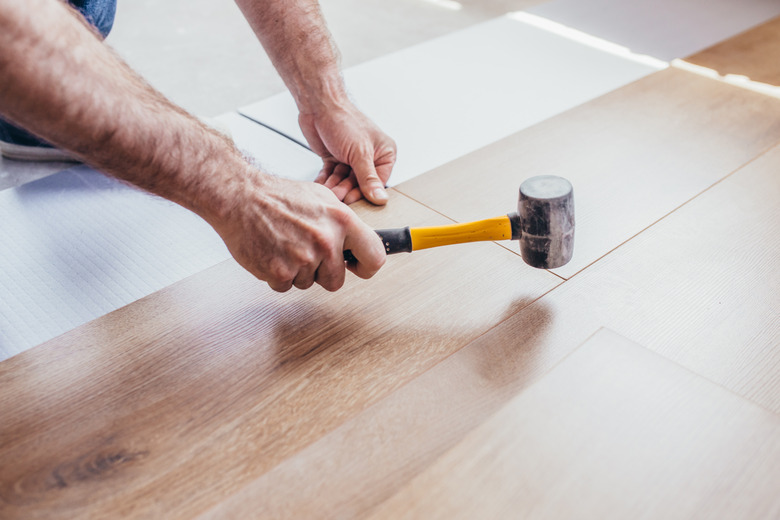How To Cut Laminate Floor Around Heating Vents
When you're doing a laminate floor installation and you come to a heating vent, be thankful for the vent cover. It's removable, and it has a wide flange on all sides that will hide any less-than-perfect cuts you make to the flooring to create the opening for the heating duct. Even so, you'll want to make the cuts as cleanly as possible, and that's usually pretty easy to do.
Cutting the Underlayment
Cutting the Underlayment
You also have to cut the underlayment around the vent opening, and you can easily do that with a utility knife after you've laid it. Be careful if you're using heated underlayment for laminate flooring, though. You can't cut through any of the heating wires embedded in the material, so you have to arrange the underlayment so that none of the elements pass over the vent opening.
Cutting Around Perpendicular Floor Registers
Cutting Around Perpendicular Floor Registers
Most floor registers are wide enough to require two or three flooring planks to span their length, which means you'll probably have to cut notches on two planks and completely cut a plank to fit in the middle. If the register is close to the wall, as most are, the plank that fits between the register and the wall will be short, but that shouldn't affect its stability once you snap it into the rest of the floor. You can watch the procedure on YouTube.
When you come to the register, place a plank over the opening and trace the part of the opening it covers on the back of the plank, using a pencil. Cut out the notch with a jigsaw. You'll have to cut from the backside of the plank, but that's preferable when cutting laminated wood because it minimizes chip-out on the finished (top) surface. Be sure you've allowed a 1/4-inch gap at the wall before you cut the notch.
When you come to the next row, cut a section from another plank to fit between the register and the wall and use the offcut to continue the row. When you come to the next row, cut a notch using the same procedure you used on the other end of the register.
Cutting Around Parallel Floor Registers
Cutting Around Parallel Floor Registers
You can use the same technique to cut notches around floor registers that run parallel to the board direction, but laminate flooring planks are wider than most registers, so it's possible you'll have to cut a hole in a single plank. Because you can't trace the hole on the bottom of the plank, you'll need to make some careful measurements. Remember to take the measurements from the finished edge of the plank — not the tongue or groove.
Measure the distances of both sides of the vent opening from the adjacent plank and the distances of both ends from the last plank in the row you're working on, and draw the outline on the face of the plank you're going to cut, not the back. Drill a 1/2-inch hole in each corner, then turn the plank over, connect the four corners with a pencil and cut along the pencil lines with a jigsaw. Cutting laminated wood from the back minimizes chip-out, but you want to drill from the front, because a drill bit causes serious chip-out when it emerges.
